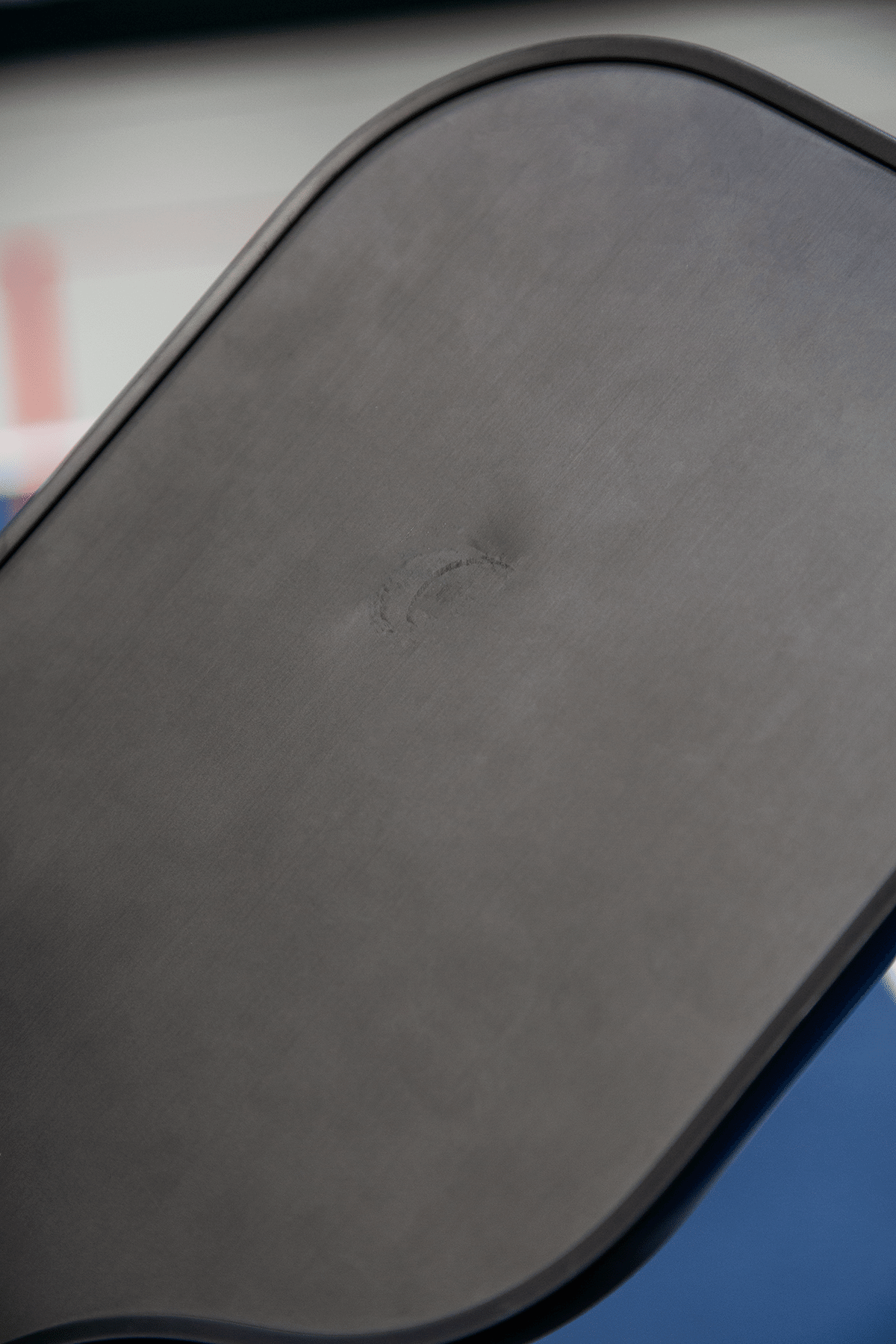We’ve all played matches where we just felt a little off. Our serves were inconsistent, drives were smashed into the net, and dinks were dreadful. Most are quick to blame their paddle…surely our unbeatable skills couldn’t have failed us! :)
While a slip in performance can be due to many factors, it could have to do with your paddle. Pickleball paddles aren’t indestructible after all! They’re made from durable materials like graphite, carbon fiber, or a composite or hybrid blend, but even the best of the best break down over time. After thousands, maybe even tens of thousands of hits, in roughly the same spot, a dead spot is not uncommon.
So, how do you know if your paddle has a dead spot?
Unfortunately, it’s not always easy to diagnose a dead paddle but there are a few things you can do to help find and identify a dead spot on your paddle.
1. Feel

Your best bet is going to be “feeling” that something is off with your paddle. While you’re playing, your shots just don’t have the same oomf they once did, or you know you hit your dink right in the sweet spot but it just flutters gently into the net. Having an off day doesn’t automatically mean your paddle is toast. But, if you consistently are doing what you do best, and your intuition tells you something isn’t right with your paddle, trust your instincts. Feel is the #1 way to tell if it’s time for a new paddle.
Another good way to identify a paddle’s dead spot is to physically feel the face of your paddle. Sometimes dents can be difficult to see with your eye, but when you slide your fingertips around the face of the paddle, you can feel indentations that may be taking away from your paddle’s performance.
2. The Tap Test

Dead spots are most commonly found at the top of the paddle, in the top corners, above the handle, and dead center of the sweet spot. This is due to the paddle striking the ground, your partner’s paddle, or just from repetitively hitting the ball in the sweet spot of the paddle (hey! This is a good problem!). Use your knuckle to tap around the paddle. The paddle should sound the same in the same parts of the paddle. (Meaning around the edge guard should sound the same all the way around the paddle. The sweet spot should sound the same around the entire sweet spot.) If any part of the paddle sounds “off,” you may have a dead spot.
3. “Eye” See It!

Probably the easiest way to identify a dead spot on the paddle is to see it with your eyes.
If you see the paddle is chipped, completely worn down, or has a visible dent on the face, there’s a good chance you’ve lost optimal performance of the paddle. Unfortunately, once a paddle is chipped, dented, or the surface has worn, there’s no real way to bring it back to “the good old days.” Any patching or re-surfacing would almost certainly deem the paddle no longer USA Pickleball approved.
Next Steps if You Feel Your Paddle Is Dead
If you recently purchased your paddle, don’t worry, your paddle may be covered under a manufacturer’s warranty and you may qualify for a replacement. Please see all warranty information here.
If your paddle is outside the warranty, let us guide you in the right direction! Utilize our Buying Guide, Paddle Coach, or go straight to hunting for a new pickleball paddle.




